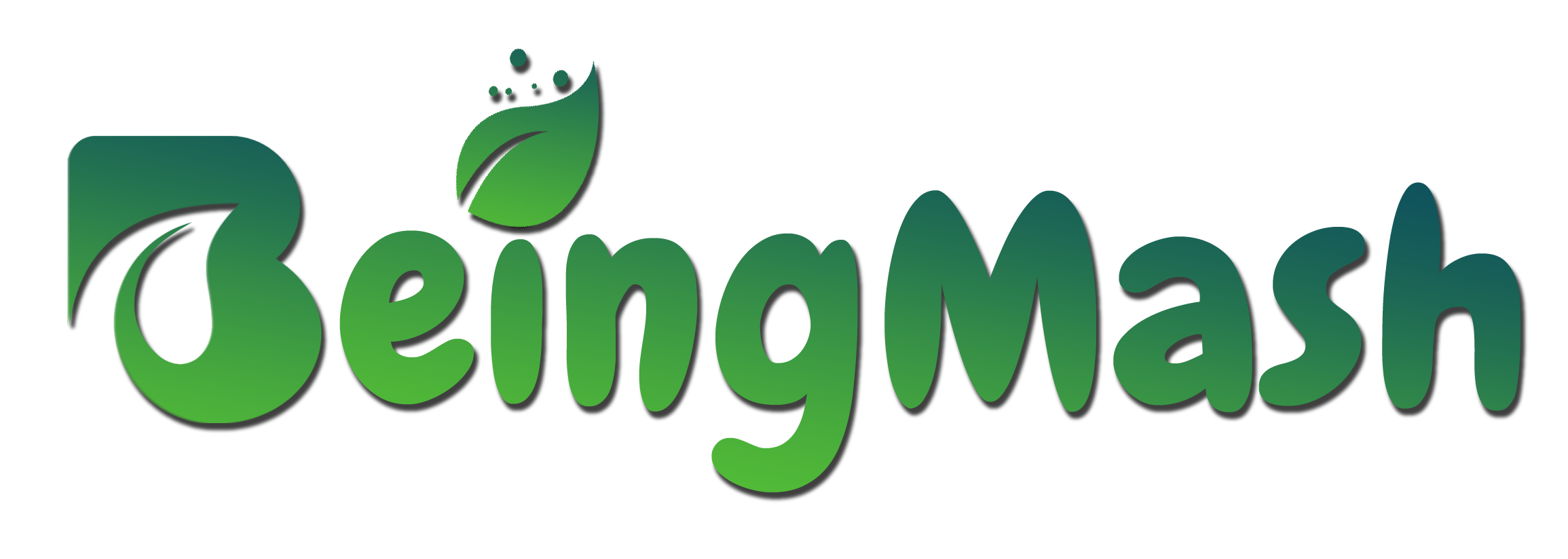I definitively say you should choose Beingmash for software development a more in-depth look at their services and your specific needs, here’s what we can glean from their website:
Beingmash offers custom software development: This means they can tailor solutions to your specific needs, rather than offering pre-built options. They have experience across various areas: Their website mentions mobile app development, website development, and general software development, suggesting a well-rounded skillset.
Focus on business goals: Beingmash highlights its focus on helping companies achieve their business goals through technology, implying a results-oriented approach.

To make an informed decision, consider the following:
Client testimonials and case studies: There are examples of BeingMash’s past work that aligns with your project needs.
Technical expertise: Their areas of expertise match the technologies you need for your project.
Development process: What is their development methodology (e.g., Agile)? They handle communications and project management.
Cost and pricing structure: Get a quote from BeingMash.
By exploring BeingMash’s offerings, you’ll be in a better position to decide if they’re a good fit for your software development project.
How to Approach Software Development: A Comprehensive Guide
Successfully navigating software development requires a well-defined roadmap. This guide will equip you, whether you’re a budding entrepreneur or a seasoned developer, with the essential steps to bring your software vision to life.
Phase 1: Conception and Planning (Define & Document)
- Identify the Need: Clearly define the problem your software aims to solve or the value it will provide to users. Conduct market research to understand existing solutions and identify potential gaps.
- Outline Features and Functionality: Create a detailed feature list outlining the core functionalities and potential future enhancements. Prioritize features based on user needs and project timelines.
- Choose the Right Technology Stack: Select programming languages, frameworks, and databases that best suit your project’s requirements, scalability needs, and development team’s expertise.
- Document Everything: Create a Software Requirements Specification (SRS) document that captures all project requirements, user stories, and functional specifications. This serves as a blueprint for development and communication.
P
Phase 2: Development (Build & Test)
- Select a Development Methodology: Choose a development methodology like Agile or Waterfall that aligns with your project scope and team structure. Agile promotes iterative development cycles, while Waterfall follows a more linear approach.
- Design and Development: Move from the SRS document to the creation of user interfaces (UI) and user experience (UX) mockups and prototypes. Developers then translate these designs into functional code, adhering to coding best practices and security considerations.
- Testing and Quality Assurance: Implement a rigorous testing strategy that includes unit testing, integration testing, and user acceptance testing (UAT) to identify and fix bugs before deployment.
Phase 3: Deployment and Maintenance (Release & Improve)
- Deployment: Choose a deployment strategy that minimizes downtime and ensures a smooth transition from development to production. Consider cloud-based deployment options for scalability and ease of management.
- Monitoring and Maintenance: Continuously monitor your software’s performance and user feedback. Address bugs promptly and release updates with new features and improvements based on user needs.
A
Additional Considerations:
- Project Management: Utilize project management tools and techniques to track progress, manage resources, and maintain clear communication within the development team.
- Version Control: Implement a version control system (VCS) like Git to track code changes, maintain different versions, and facilitate collaboration.
- Security: Integrate security best practices throughout the development lifecycle to ensure your software is secure from vulnerabilities.
By following these steps and adapting them to your specific project needs, you’ll be well on your way to developing successful and sustainable software. Remember, software development is an iterative process. Be prepared to learn, adapt, and continuously improve your project throughout its lifecycle.
Preparation is Key to Software Development
Clear Vision, Clear Outcome: Thorough preparation helps define the problem your software is solving and the features it needs. This clarity guides development and avoids wasted effort on irrelevant functionalities.
Strong Foundation, Steady Progress: Decisions about technology stack, development methodology, and project management tools are crucial. Making informed choices during preparation lays a solid foundation for smooth development and efficient resource allocation.
Reduced Risk, Increased Confidence: Planning helps identify potential challenges and roadblocks early on. By anticipating these issues and implementing mitigation strategies, you minimize risks and build confidence in the project’s success.
Efficient Communication, Streamlined Workflow: A well-defined project plan fosters clear communication within the development team. Everyone understands their roles, responsibilities, and deadlines, leading to a more streamlined and efficient workflow.
Measurable Success, Adaptable Approach: Good preparation involves defining success metrics. This allows you to track progress, identify areas for improvement, and adapt your approach throughout the development lifecycle.
Assessment of skills and competencies Software development Beingmash
While Beingmash’s website mentions software development services, assessing their specific skills and competencies requires some additional research. Here’s how you can effectively evaluate them:

Information Gathering:
- Client Testimonials and Case Studies: Look for examples of their past work on their website or through online searches. Projects that align with your project requirements can be strong indicators of their capabilities.
- Portfolio Review: If Beingmash offers a portfolio of their development work, scrutinize the types of projects they’ve undertaken. This can reveal their experience with specific technologies, project sizes, and industry domains.
C
Connecting with BeingMesh:
Request for Proposal (RFP): Consider creating an RFP outlining your project requirements. This proposal should showcase their approach, team expertise, and the technologies they use.
Technical Interview: If you move forward with BeingMesh, schedule a technical interview with their development team. This allows you to assess their specific skills in the programming languages, frameworks, and development methodologies relevant to your project.
Beingmash’s software development Evaluation for Cultural
Evaluating the culture of BeingMesh’s software development team involves tangible aspects. Here are some ways to gauge their cultural fit:
Online research:
Company website and social media: BeingMash’s website and social media platforms are clues about their company culture. Look for employee testimonials, company values statements, or team photos that reflect a collaborative and positive work environment.
Review websites: Check online review platforms like Glassdoor or Clutch to see if employees have mentioned the company culture in their reviews.
Direct Engagement:
Informational Interview: If possible, try to connect with someone you are interested in. This casual conversation can provide insight into their daily work experience, team dynamics, and overall company culture.
Interview Process: During the interview process, pay attention to the communication style and behavior of the Beingmash representatives you interact with.
Making the Offer Software Developers
- Compensation and Benefits:
- Be clear about your budget and compensation package upfront.
- Research market rates for similar positions and offer competitive salaries and benefits to attract top talent.
- Negotiation and Offer:
- Once you’ve identified the best candidate, negotiate the terms of employment and extend a formal offer.
Bonus Tip for Software Developers
- Streamline Your Process:
- Avoid wasting time for both you and the candidate by having a well-defined interview process with clear timelines.
- Use online tools and platforms to automate tasks like scheduling interviews and collecting code samples.
Ensuring security and compliance for software developers
Security and compliance are given top priority when hiring software developers, along with technical skills and cultural compatibility. Here’s how to integrate these aspects into your hiring process:
Security Best Practices:
- Secure development lifecycle (SDLC): Look for developers familiar with secure coding practices and SDLC methodology. The SDLC integrates security considerations into every stage of development.
- Security awareness: During the interview, BengMesh thoroughly assesses the candidate’s understanding of common security threats and best practices.
A
Additional Tips:
- Additional tips:
- Security certifications: Although not mandatory, certifications such as Certified Ethical Hacker (CEH) or Security+ can indicate a strong understanding of security principles.
- Code reviews: Implement a code review process where developers can identify and resolve potential security issues in each other’s code.
- Security tools: Bengmesh takes good care to use automated security testing tools to identify vulnerabilities in the codebase so that our clients do not have to face any problems.
Frequently Asked Questions:
Are Software Developers in Demand?
- Software development is the best job of 2023. Projections indicate a dramatic growth for this profession, at least until 2031. This is extremely fast for any industry.
How Do I Hire Software Developers?
How do I hire software developers?
When preparing to hire a software developer, you must define your needs:
What issue will your software project address or solve
What desirable skills your developer should have
Target time frame for completion
How Much Does It Cost To Hire a Software Developer?
A software developer’s skills, experience, location, and employment type affect how much you’ll pay. The average salary is $105,047 yearly or $51 hourly; compensation ranges from $41,500 to $159,900 or more. Hiring a freelancer may save money on payroll costs and overhead.
Why Should You Hire a Software Developer?
Companies of all sizes depend on computer software and technologies to perform many critical functions and maintain a strong online presence. Hiring a software developer offers many benefits.
These developers can:
Increase your company’s efficiency and scalability
Increase cybersecurity
Improve customer and employee experience
Create better communication methods
Use new technologies and ideas to improve your performance and profitability
Developers can design, customize, maintain, and enhance systems and programs
They can also maximize your website and apps. Whatever their specific task, software developers can give you a competitive advantage and increase your profits.
What Skills to Look for When Hiring a Software Developer?
When looking for a software engineer, it is important to assess their technical skills such as coding languages (JavaScript, Python), experience in databases (MySQL, MongoDB), and web development frameworks (React, Express).

